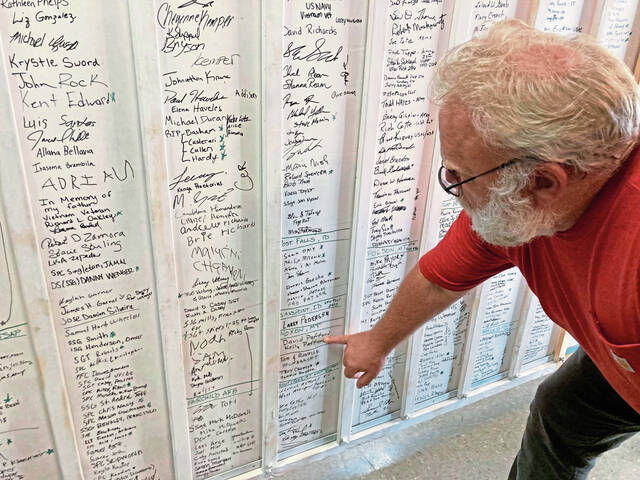Editorial: Suicide is military's last battlefield
There is one thing that soldiers and sailors, Marines and airmen understand from the moment they undertake their task.
It is that their lives are counted. They are the real weapons of war — more than bullets or bombs. They are the single greatest commodity in the logistics of defense and attack. They are the measurement of success and failure.
But that also leaves active duty military and veterans alike with an understanding of the finality of death as well as its constant shadow.
Perhaps that is why those who do or have served so often fall to a different kind of battle — the one with themselves and their own internal enemies.
In the last 20 years, the U.S. lost 7,057 active-duty service members to combat, according to a 2021 Brown University study. That’s less than a quarter of the 30,177 lost to suicide in that period. Leaving service does not end the danger; veterans are 50% more likely than other Americans to take their own lives. About 17 veterans died every day in 2019.
That means the most efficient and deadly enemy of the U.S. military is mental health.
“It’s an issue that needs to be addressed,” said David Williams, the founder of Joint Operation Mariposa, a nonprofit focused on increasing veteran suicide awareness.
He stopped Monday at the American Legion Post 980 in Plum as part of a cross-country trek that ended Tuesday at the Lincoln Memorial in Washington, D.C. He made the journey now because September is Suicide Awareness Month.
But the issue of veteran and military suicide is not one that can be confined to 30 days a year. It has to be at the forefront of the government’s attention every month because our defenders — those who did the job and those still doing it — are at risk every day.
The federal government made promises to these people that must be fulfilled, and health care does not stop at the body. It definitely includes mental health.
State and local resources should also be part of the mix as a more boots-on-the-ground response in hometowns, especially as so many of those who were sent to fight in Afghanistan and Iraq came from state-based National Guard units. They can be part of larger community efforts to address suicide, an epidemic that has no respect for age or service.
And we can all reach out to our friends and family and neighbors who we know are at this increased risk because of their time in uniform. Check on them. Listen to them. Connect them with the help they might deny they need.
Supporting these people is important not just because they deserve it. It is a critical national security interest.
It’s important because our military is a reservoir that must be constantly refilled. How can we hope to keep the well from going dry if the people who have gone before are left on the last battlefield — the one where they fight with themselves in a literal battle to the death?
Remove the ads from your TribLIVE reading experience but still support the journalists who create the content with TribLIVE Ad-Free.

